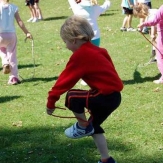Geography Curriculum Intent
The geography curriculum at Bushfield Infants encourages children to develop a greater understanding and knowledge of the world, as well as their place in it. Geography is, by nature, an investigative subject, which develops an understanding of concepts, knowledge and skills. We seek to inspire in children a curiosity and fascination about the world and its people which will remain with them for the rest of their lives; to promote the children’s interest and understanding of diverse places, people, resources and natural and human environments, together with a deep understanding of the Earth’s key physical and human processes.
The geography projects at Bushfield Road Infant School are well sequenced to provide a coherent subject scheme that develops children’s geographical knowledge and skills that are transferable to other curriculum areas. Where there are opportunities for making meaningful connections with other projects, geography projects are sequenced accordingly. All geography projects are taught in the autumn and spring terms, with opportunities for schools to revisit geographical concepts in some of the summer term history projects.
In Year 1, children begin the autumn term by studying the project Our Wonderful World. This project involves children studying maps, globes, positional and directional language, cardinal compass points, picture maps, keys, world oceans and continents, the Equator Northern and Southern Hemispheres and Poles, countries of the United Kingdom, settlement types and local fieldwork spotting humans and physical features. In the spring term, children study the project Bright Lights, Big City. This project enables children to build their skills and knowledge, revisiting and exploring further the United Kingdom’s countries and weather patterns, along with its capital cities, seas and oceans. They explore the human features of cities, including how people live, work and use transport. London is studied in detail, using digital mapping and aerial photographs, landmarks are explored and comparisons are made to another capital city, Kuala Lumpur.
In the autumn term of Year 2, children study the project Let’s Explore the World, building on their prior skills. The children use an atlas and world maps, revisit the cardinal compass points, use a key, collect and interpret primary data. They also revisit the Equator and the Northern and Southern Hemispheres and Poles, hot and cold places and are introduced to the term ‘temperate’ and ‘sustainability’. They learn more about the United Kingdom, studying cities, populations, landscape, physical and human features, carry out local fieldwork and compare England to Somalia. In the spring term children study the project Coastline, where they identify physical coastal features, looking at their size, location and position, and study erosion. They revisit positional and directional language, use maps of the United Kingdom and compass points to describe direction of travel. They compare Whitby and Cleethorpes, how human and physical features change over time, explore dangers and the role of the RNLI, using mapping tools.
